Capybaras are taking over, and I’m not just talking about your social media feed. These adorable, oversized rodents are making waves in ecosystems far from their native South American homes. But here’s the million-dollar question: Is a capybara an invasive species? Let’s dive into this furry dilemma and unpack what it means for our environment.
What Makes a Species Invasive?
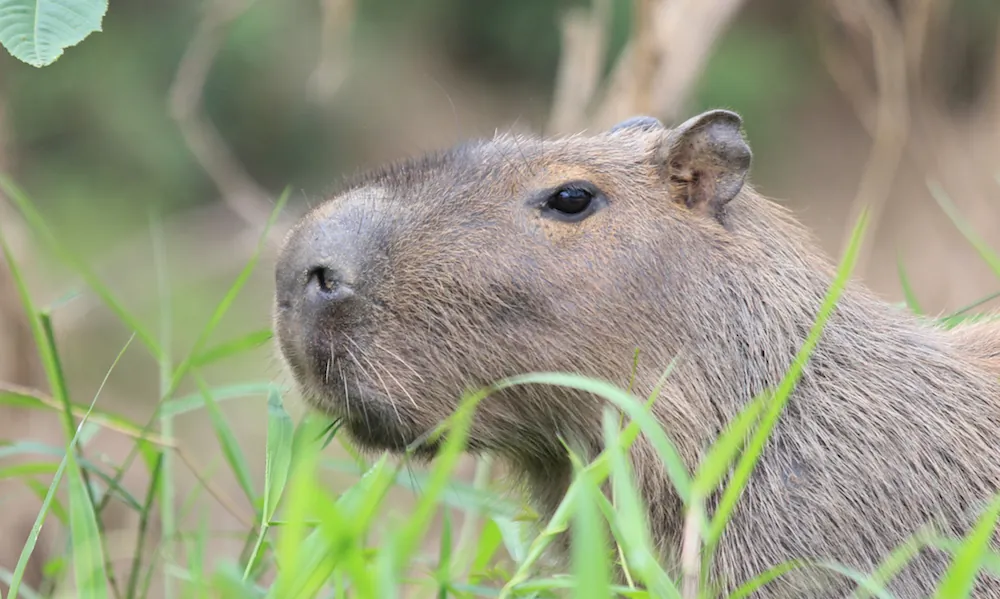
Before we label our chubby friends as troublemakers, let’s get our facts straight. An invasive species is like that party crasher who shows up uninvited and eats all the snacks. In ecological terms:
- It’s non-native to the ecosystem
- It causes economic or environmental harm
- It threatens human health
Now, capybaras don’t check all these boxes everywhere they go. But in some places, they’re starting to raise eyebrows faster than they raise their adorable little heads above water.
The Capybara Invasion: Fact or Fiction?
Here’s the deal: capybaras are native to South America, but they’re popping up in places like Florida faster than you can say “giant guinea pig.” In 2016, wildlife experts started ringing alarm bells about capybaras potentially becoming Florida’s next big invasive headache.
Why Florida? Well, it’s like a five-star resort for these semi-aquatic rodents:
- Warm climate ✓
- Plenty of water ✓
- Abundant vegetation ✓
It’s no wonder they’re feeling right at home. But are they really causing havoc?
The Capybara’s Rap Sheet: Environmental Impact

Let’s break down the evidence:
- Crop Munchers: Capybaras have a reputation for being agricultural pests in their native range. They’re not picky eaters and can do a number on crops if left unchecked.
- Ecosystem Engineers: These rodents can modify habitats significantly. They graze heavily and create paths through vegetation, which can alter plant communities.
- Disease Vectors: Capybaras can carry ticks that spread diseases like Rocky Mountain spotted fever. Not cool, capybaras. Not cool.
- Competition with Native Species: In areas where they’re introduced, capybaras might compete with native wildlife for resources.
But here’s the kicker: in Florida, where they’re causing the most buzz, capybaras aren’t officially classified as invasive – yet. They’re considered “exotic” for now. It’s like they’re on ecological probation.
The Capybara Conundrum: Native vs. Invasive
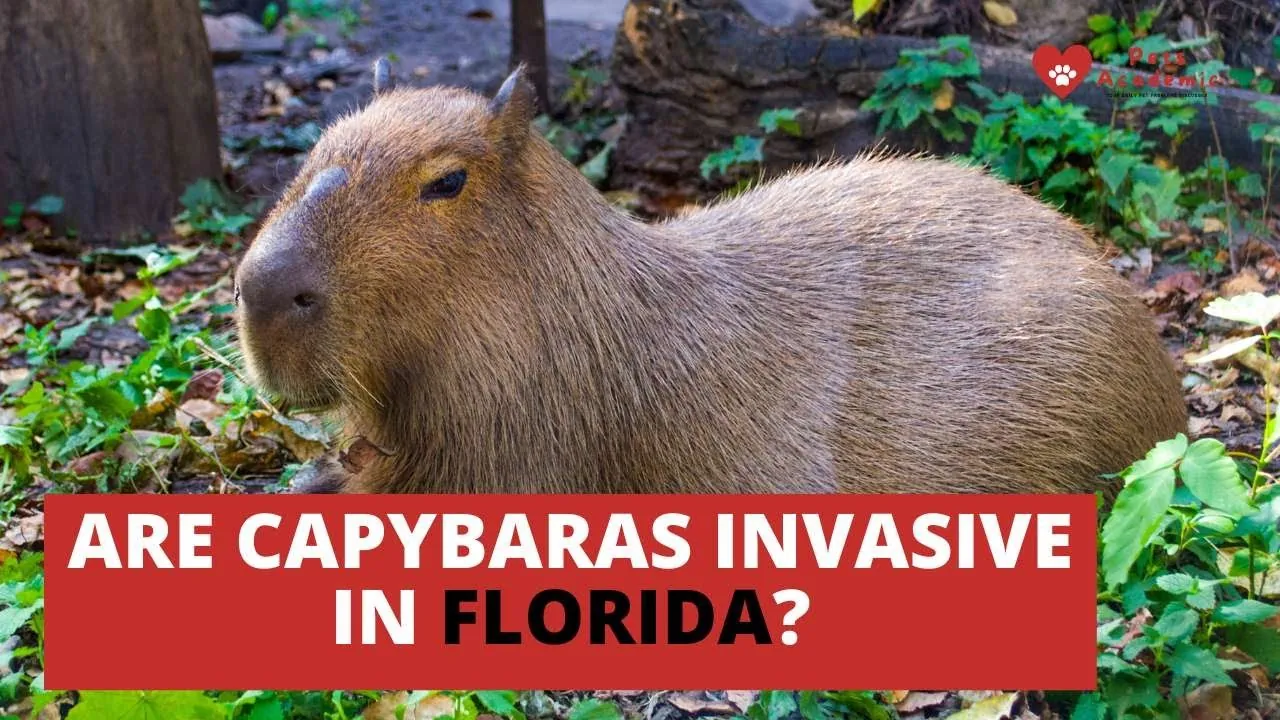
Now, this is where it gets interesting. Capybaras aren’t new to North America. In fact, they’re more like long-lost residents:
- Giant capybaras (Neochoerus) lived in North America during the Pleistocene era.
- Florida was home to capybaras for millions of years before they disappeared.
So, are we dealing with an invasion or a homecoming? It’s a head-scratcher for ecologists and a reminder that nature doesn’t always fit into our neat little boxes.
The Florida Experiment: Capybaras on the Loose
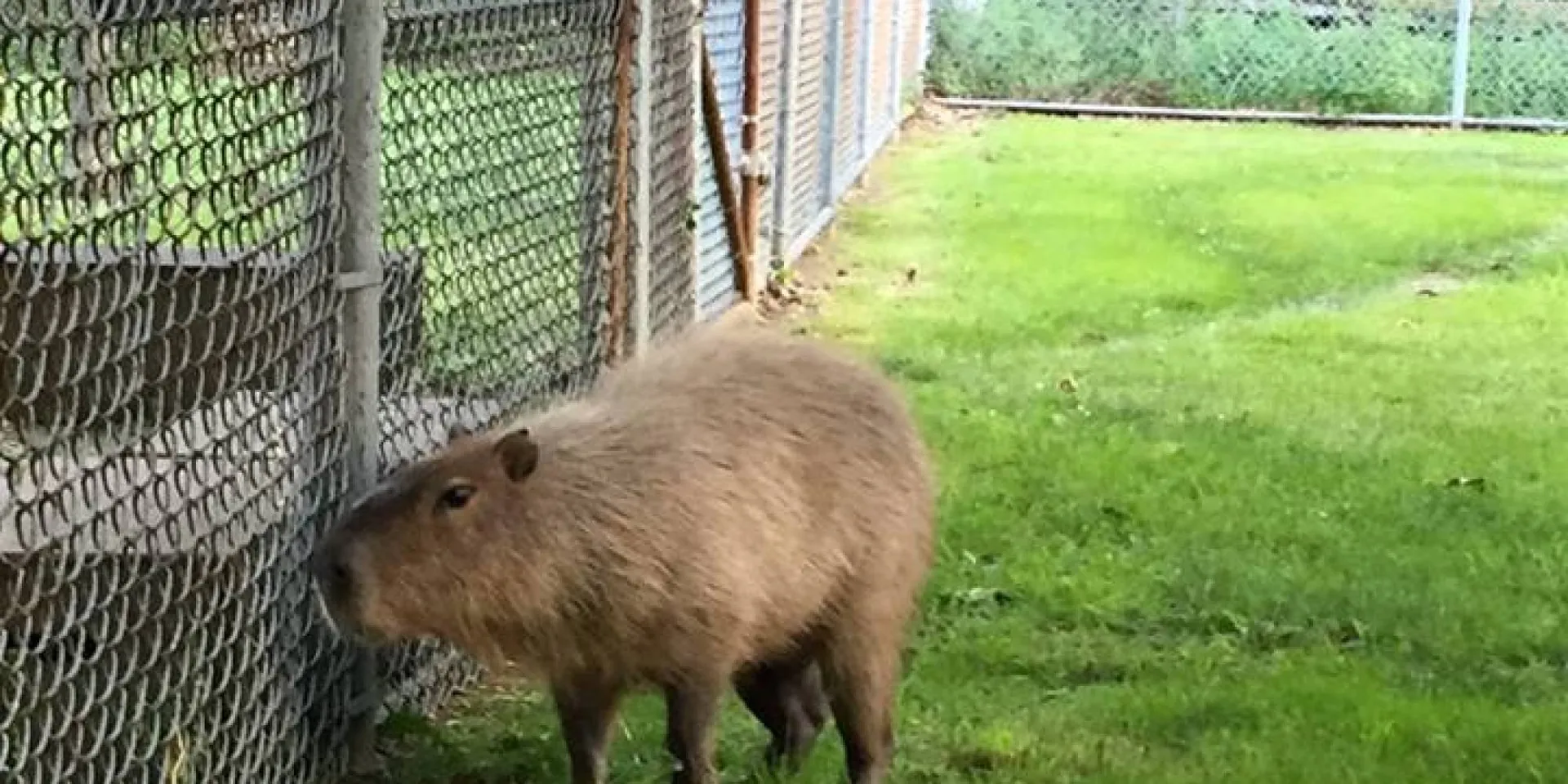
In the Sunshine State, capybaras are like that friend who shows up unannounced – some people are thrilled, others are worried about the carpets. Here’s the lowdown:
- A small population escaped from a research facility in the ’90s.
- There have been verified sightings in the Tampa metro area.
- Some experts believe there might be an established population in Gainesville.
But here’s the twist: Florida’s ecosystem might actually benefit from these furry immigrants. They could become prey for native predators like alligators and Florida panthers, potentially helping to balance the food chain.
The Capybara’s Secret Weapon: Adaptability

What makes capybaras potential invaders? They’re the Swiss Army knives of the rodent world:
- They can thrive in various habitats, from forests to urban parks.
- They reproduce quickly, with females giving birth to up to eight pups twice a year.
- They have few natural predators in introduced areas.
This adaptability is their superpower and our potential headache.
The Human Factor: Our Role in the Capybara Saga
Let’s face it – we’re not innocent bystanders in this rodent drama. Humans have a knack for shaking up ecosystems:
- We’ve altered landscapes, creating ideal capybara habitats.
- Some folks keep capybaras as exotic pets (because who doesn’t want a 100-pound rodent in their backyard?).
- Climate change is shifting habitats, potentially making new areas suitable for capybaras.
Our actions have set the stage for capybara expansion, whether we meant to or not.
The Verdict: Invasive or Just Misunderstood?
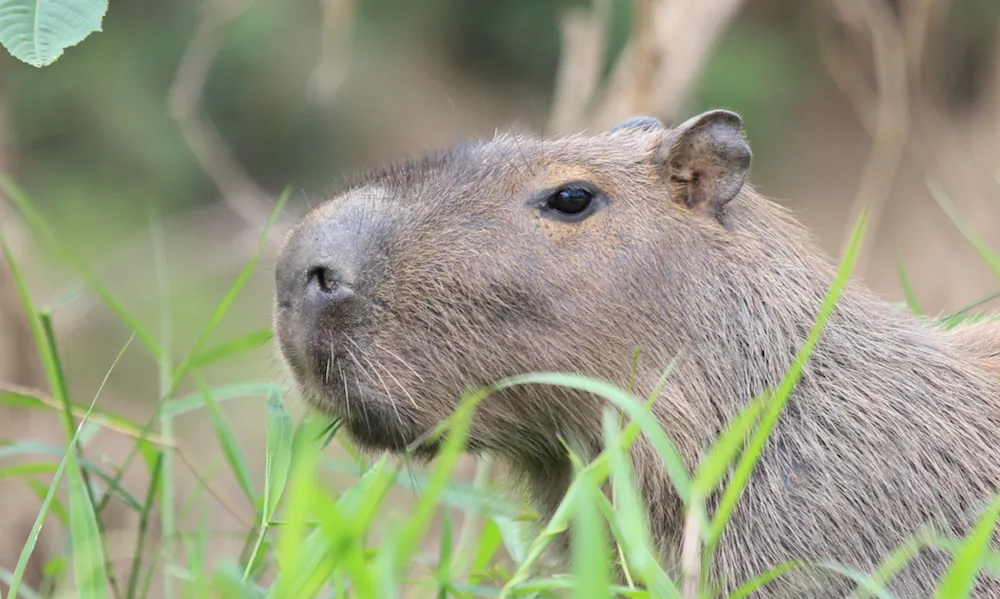
So, are capybaras invasive? The jury’s still out, but here’s my take:
- In their native range: Definitely not invasive.
- In places like Florida: Potentially invasive, but not officially… yet.
- In your heart: Absolutely invasive (in the best way possible).
The truth is, it’s complicated. Ecosystems are like intricate tapestries – pull one thread, and you might unravel the whole thing. Or you might create a new, equally beautiful pattern.
What’s Next? Managing the Capybara Question
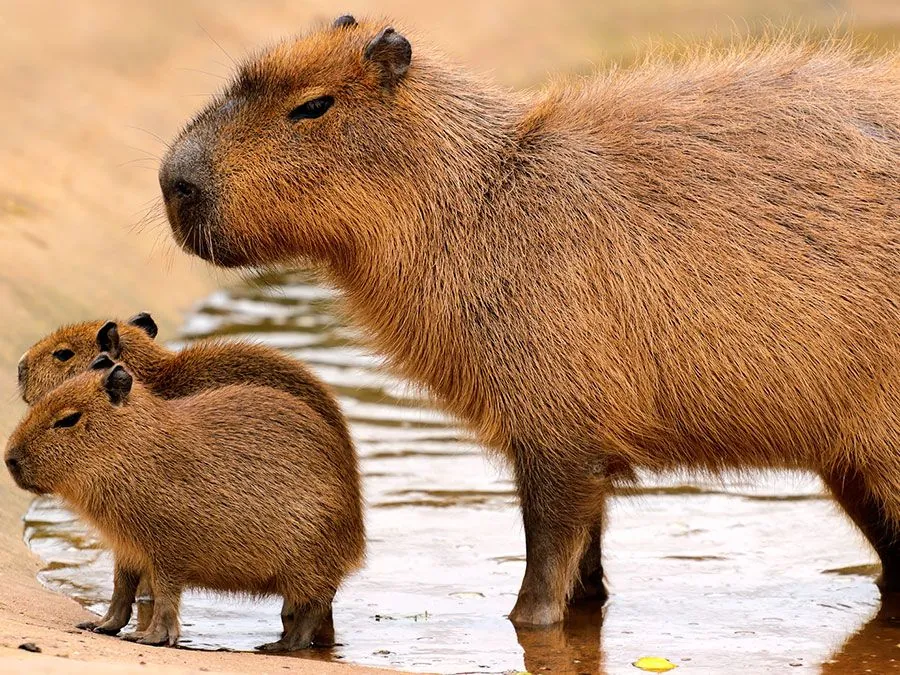
Here’s what we need to do:
- Monitor Populations: Keep tabs on where capybaras are popping up and how they’re impacting local ecosystems.
- Research: Study how capybaras interact with native species and habitats in introduced areas.
- Educate: Inform the public about the potential risks of releasing exotic pets into the wild.
- Prepare: Develop management strategies in case capybara populations explode.
- Stay Flexible: Remember that what’s invasive in one context might be beneficial in another.
FAQs: Your Burning Capybara Questions Answered
Q: Can I keep a capybara as a pet?
A: In some states, yes. But remember, they’re not just oversized hamsters. They need specialized care, lots of space, and a water source. Think twice before you turn your backyard into a mini-Amazon.
Q: Are capybaras dangerous to humans?
A: Generally, no. They’re pretty chill creatures. But like any wild animal, they can be unpredictable. Plus, they can carry diseases, so it’s best to admire them from a distance.
Q: How do capybaras impact local wildlife?
A: It varies. They might compete with native species for food and habitat. But they could also become prey for predators that need new food sources. Nature’s complicated like that.
Q: What should I do if I see a capybara in the wild (in a non-native area)?
A: Don’t approach it, but do report the sighting to your local wildlife authorities. They track these things to monitor potential population growth.
Q: Could capybaras help restore ecosystems?
A: Possibly! Some experts think they could fill ecological niches left by extinct species. But it’s a risky game to play with ecosystem balance.
The Bottom Line: Capybaras on the Move
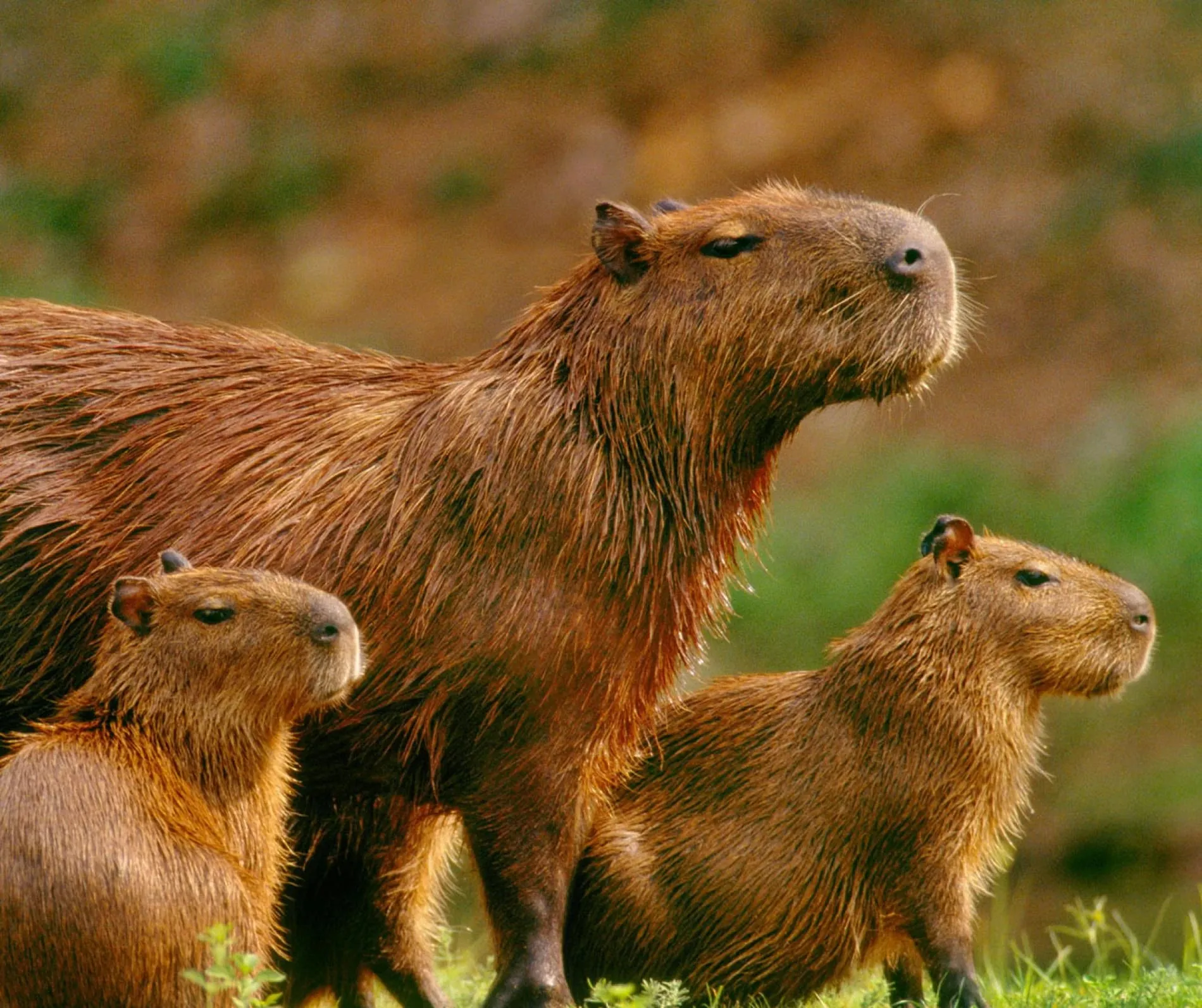
Is a capybara an invasive species? It depends on where you’re standing and who you ask. These charismatic creatures are blurring the lines between invasive and innovative, forcing us to rethink our approach to wildlife management.
One thing’s for sure – capybaras are here to stay, whether we label them as invaders or not. As we navigate this rodent revolution, let’s approach it with curiosity, caution, and maybe just a touch of awe at nature’s resilience.
Remember, today’s invasive species might be tomorrow’s ecological savior. In the ever-changing world of wildlife, the only constant is change itself. So, keep your eyes peeled for these charming chonks – they might just be rewriting the rules of nature right in your backyard.
